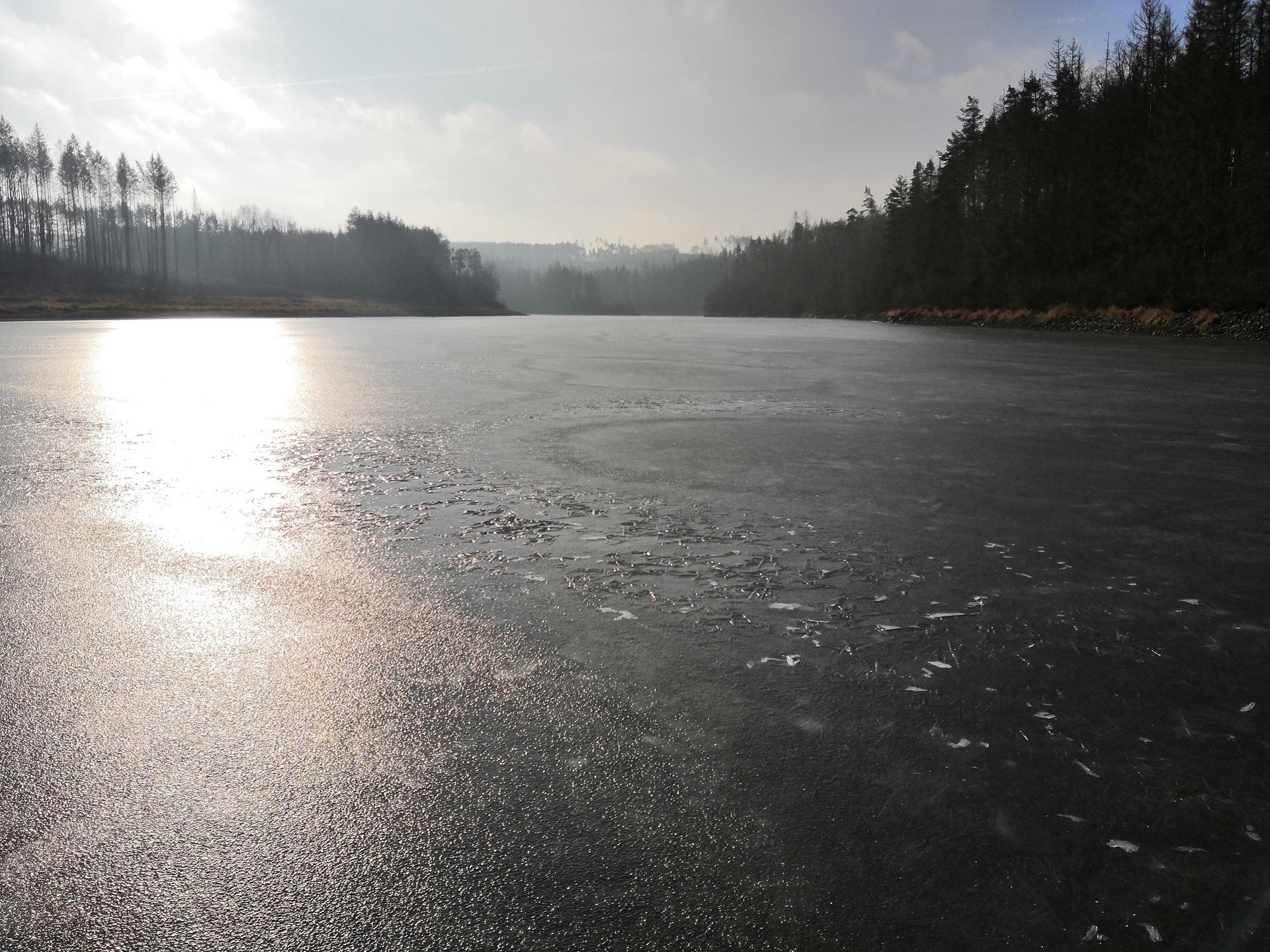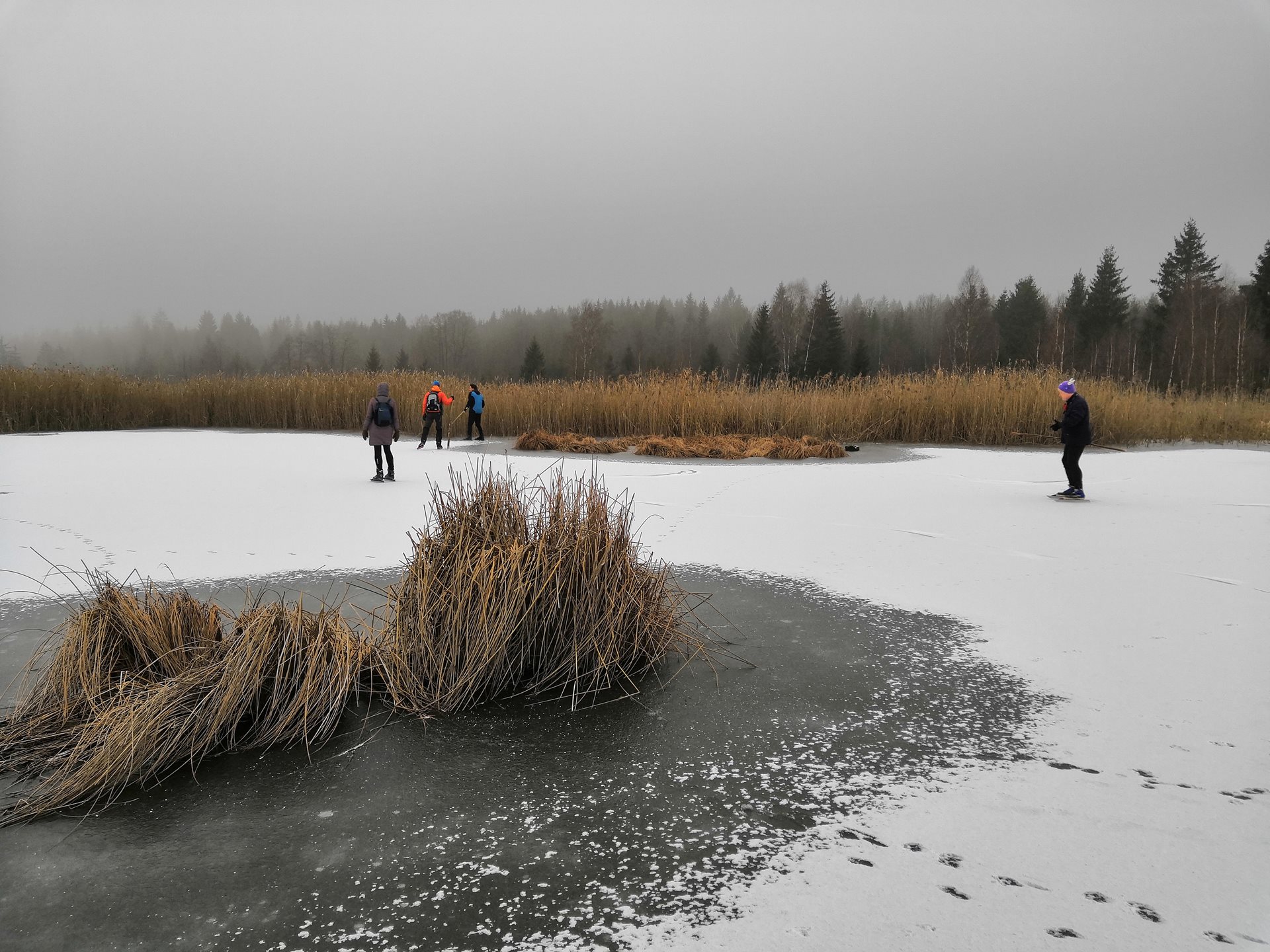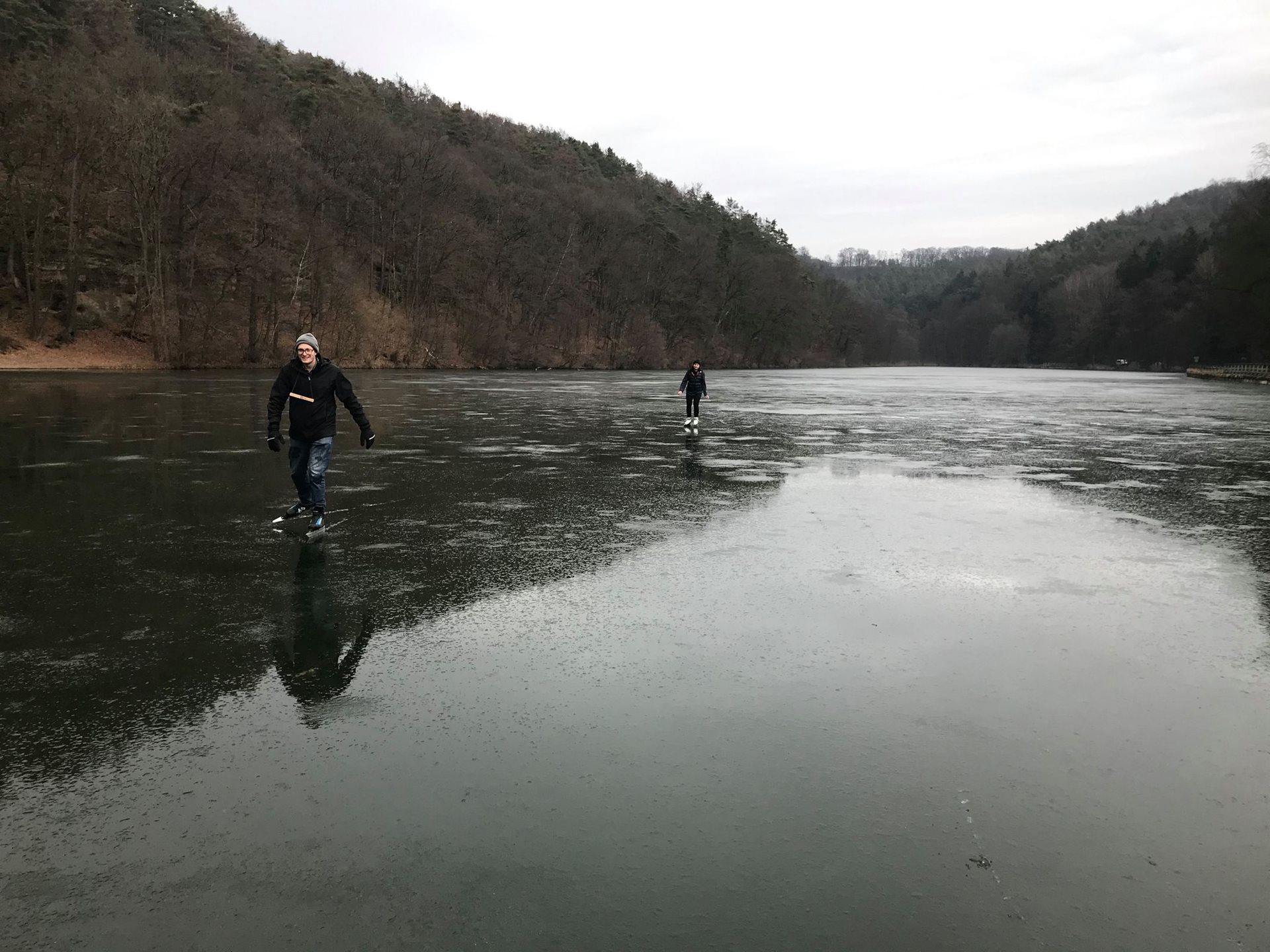This sport is called long-distance skating, and those who have experienced it will confirm that it is one of the most beautiful physical activities in winter nature. However, it has its specific and quite strict rules as well as special equipment. It can even be called an adrenaline sport, which is a bit like freeriding. Safety rules are very important.
You whistle 30 km/h on a frozen surface, silence, just the sound of skates and the occasional roaring crackle of ice. You watch the terrain in front of you as if you were driving a car. It is necessary to look in front of you, pay attention to cracks, unevenness or stones and twigs in the ice, you would lie right away. Then watch the middle distance and longer horizon. Ice everywhere, rocks and trees on the shore, sky and sun overhead. The state of the soul is approaching euphoria.
When the conditions are good, if there is enough frost, it is possible to skate tens of kilometers on some Czech rivers such as the Otava in southern Bohemia. But mainly on the reservoirs - Orlík, Hracholusky, Nové Mlýny…
 Rock fans of this sport number dozens in our country, but more and more Czechs are starting to try it. A beginner must first purchase or rent the right sports equipment. But it is not so difficult or expensive. Gentlemen should forget about hockey skates and ladies about classic women's skates. You can skate on them as well, but it is not comfortable for those who want to skate long kilometers. It is also slower and especially absolutely unsuitable for boarding ice from the mainland, which is often a bit daunting. The key to natural skating are long-distance skates - long knives, similar to racing speed skating. However, they are not firmly attached to the shoe, but cross-country bindings are mounted on them and are therefore attached to cross-country shoes. Cross-country shoes for skating or so-called combi (for both skating and classics) are ideal, because they provide good reinforcement in the ankle area. If you already have shoes, you will only need skates and bindings - together it will cost about 150 euros.
Rock fans of this sport number dozens in our country, but more and more Czechs are starting to try it. A beginner must first purchase or rent the right sports equipment. But it is not so difficult or expensive. Gentlemen should forget about hockey skates and ladies about classic women's skates. You can skate on them as well, but it is not comfortable for those who want to skate long kilometers. It is also slower and especially absolutely unsuitable for boarding ice from the mainland, which is often a bit daunting. The key to natural skating are long-distance skates - long knives, similar to racing speed skating. However, they are not firmly attached to the shoe, but cross-country bindings are mounted on them and are therefore attached to cross-country shoes. Cross-country shoes for skating or so-called combi (for both skating and classics) are ideal, because they provide good reinforcement in the ankle area. If you already have shoes, you will only need skates and bindings - together it will cost about 150 euros.Clothes can be similar to cross-country skis, you just have to take into account that it is sometimes very cold on the ice and, unlike cross-country skis, the skater does not warm the arms and upper half of the body so intensely. Warm winter gloves are very suitable, if it is colder. It is good to have a warmer cap and also a collar on the neck. If there is a lot of frost and the wind is blowing, downhill goggles are also suitable.


Safety first
The key to long-distance skating is not to ride alone and to use the right safety features. A light helmet, for example for a bike or ski touring, is definitely suitable. You can fall on the ice once or twice. However, the absolute obligation should be special rescue spikes with a cord in a "home" simple design or factory production from Sweden, which have a whistle to call for help. And also a lifeboat "handball". Do not be afraid, it does not mean that everyone who goes skating on a natural surface must immediately "bathe". Anyone who is experienced or at least careful and cares about safety may never experience a break in the water. But what if…
The spikes are worn by the skater on his neck so that, if necessary, he can immediately pull them out and use them for rescue. The basic rule when breaking into the water is to stay calm, turn around and use spikes to climb out of the ice where the skater came from.
The main promoter of long-distance skating in our country is Jan Stodola from Prague, who has "skating" in nature for thousands of kilometers not only in our country, but also in Sweden, America and other areas, and willingly provides advice to others. His web and FB page Long-distance skating is also the biggest helper for anyone who would like to try this sport.
"At this time last year, around mid-January, a young American couple Ethan and Emily from Nebraska contacted me that they would take a trip to Europe for the fourth wedding anniversary and that they would like to skate in the Czech Republic. There was crazy madness, ice nowhere, only at Kokořín castle 60 km north from Prague with smaller lakes in forest. I lent them shoes and long skates. It was raining, ice like that, but super smooth. They really enjoyed it, and so did I," recalls Jan Stodola. "They are nice couple originaly from Utah, both graduate students. Emily was an ice skater, so she has skated on a few lakes, Ethan have never had formal lessons, but he is comfortable and steady in skates".
"At this time last year, around mid-January, a young American couple Ethan and Emily from Nebraska contacted me that they would take a trip to Europe for the fourth wedding anniversary and that they would like to skate in the Czech Republic. There was crazy madness, ice nowhere, only at Kokořín castle 60 km north from Prague with smaller lakes in forest. I lent them shoes and long skates. It was raining, ice like that, but super smooth. They really enjoyed it, and so did I," recalls Jan Stodola. "They are nice couple originaly from Utah, both graduate students. Emily was an ice skater, so she has skated on a few lakes, Ethan have never had formal lessons, but he is comfortable and steady in skates".

The biggest problem with remote skating is capturing the right moment when the ice is strong enough and you can skate safely. It is practically meaningless to give the required ice strength in centimeters in this article, because new, young ice can be much thinner than old ice for safe skating. The ideal variant is several days of stronger frosts, when a sufficiently strong ice is formed. Then it doesn't have to freeze all day, but at least night frosts are enough and you can skate for a relatively long time, even when few people would expect it. Jan Stodola basically rides with a strong wooden stick, which he uses to test the unexplored ice. The technique of testing ice is simple. If the stick pierces the ice quite easily during a blow, the situation is not safe.
The second complication is finding easy and safe access to the ice. It is not always easy and skaters have to look for the right place for a while, sometimes use a wooden board, which is laid over unfrozen ice.
But the reward is amazing. Being in a small group on a huge area of a lake or river is a great experience that is unmatched.









-(1).jpg?width=1920&height=1204&ext=.jpg)
